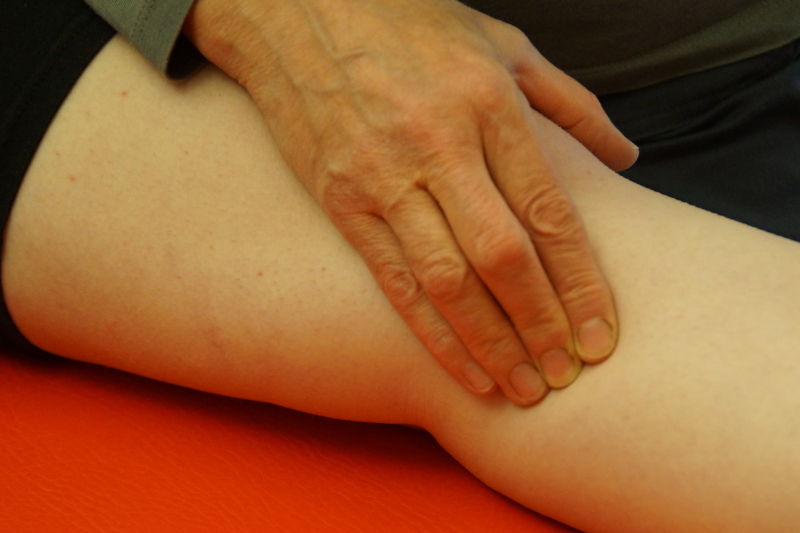A rare case of pes anserinus bursitis
Does palpation really matter in a knee assessment?
By Dr M. Ferenc, MD
Occasionally, we are faced with a situation, where precise history, as well as complete clinical investigation, do not lead us closer to the diagnosis. Is it possible, that the key lies in palpation ?
Infra patellar bursitis, history
A 62-year-old lady complains about pain in the left knee.
Pain is constantly present for more than a year. The patient does not remember the causative injury, she says that the problems have arisen spontaneously and gradually.
Previously, she and her partner have taken daily walks, which is now possible only occasionally, in a shortened range and only on a flat terrain.
Furthermore, she explains that it is worst going downstairs and that luckily she lives on the first floor of the residential block and not higher up.
She had been to an orthopaedic surgeon, who said that her knee was not jet mature for a prosthetic knee replacement.
Painkillers and antirheumatic ointments did not bring about a significant improvement.
Thorough patient history is crucial for the assessment of knee joint.
We have already learned some important data, such as atraumatic nature of problems.
Moreover, the history of internal derangement (locking, twinges, giving way) is negative, although in Orthopaedic medicine, the walking-down-the-stairs-complains have in this regard a special meaning.
The lokalisation of pain is of extraordinary importance. Our patient replies that the pain is more or less limited to the inner part of the knee and that occasionally her knee seems to be swollen.
In the absence of diffuse pain and swelling of the entire knee, we can carefully ‘exclude’ the capsular impairment and concentrate more on the local pathology.
Differential diagnosis of medial compartment pain
The medial knee compartment does not hold an abundance of structures that could cause our patient’s problems. We are considering the medial coronary ligaments, perhaps the medial collateral ligament. Medial meniscus, however, is less likely. Unfortunately, we now have to approach a clinical examination without a clear working hypothesis…
Clinical image
After a clinical examination, comprising of a battery of 12 tests, we get exactly what we are most afraid of- the whole investigation is negative.
By using both passive and resisted tests- we were unable to reproduce patent’s pain. Even the additional test of resisted knee flexion with knee in internal rotation in sitting turns out to be negative.
What now?
Perhaps the answer lies in palpation. The structures of the medial compartment are now to be palpated to determine the potential sensitivity to palpation.
Concerning interpretation, one has to be very cautious and above all, we always compare positive results with a healthy side. We find a prominent local sensitivity over the pes anserinus area.
Moreover, under our fingers we discerne a clear swelling that is not present on the healthy knee.
Is the diagnosis now clear?
Pain syndrom on walking downstairs... Pathology is less common, that are for instance pre- or infra-patellar bursitis, but not negligible. It is more common in the elderly, especially in the presence of genu valgum or medial knee instability.
It manifests itself by pain on squatting or when walking downstairs.
Pain in pes anserinus bursitis should be clinically reproducible by resisted knee flexion, having the knee internally rotated (testing pes anserine- complex). There should come to an increase in pain in the event of abrupt discontinuation of the resistance during this test.
Moreover, the pain could be provoked by passive external knee rotation.
 Palpation pes anserinus - bursitis
Palpation pes anserinus - bursitis
Back to our patient Unfortunately, neither of these test was positive in our patient. We did, however, using clues from history and our palpatory skills, reach the diagnosis and applied the targeted therapy.
One week after the bursa-infiltration, our patient reports that she is overjoyed to be pain free and is now again able to walk freely with her husband, even on a hill near her home…
Occasionally, it may turn out that something as simple as good clinical tactile sense is the key to accurate diagnosis and successful therapy
